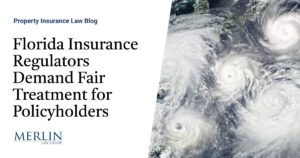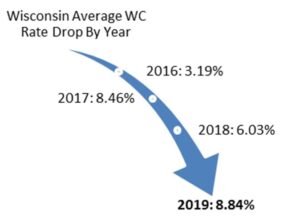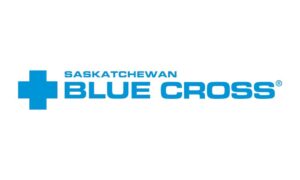Manufacturing & Distribution Risk Considerations in Response to COVID-19

3 Questions You Should be Asking
Save as PDF
The COVID-19 pandemic has created a crisis globally and manufacturing and distribution (M&D) companies are responding to the challenge in extraordinary ways. As business models and operations shift and evolve, M&D companies must stay vigilant on risk management efforts.
The following series of questions can help guide M&D companies as they continue to navigate their response.
What risk do we assume in repurposing our operations in response to COVID-19?
Many M&D companies have already repurposed facilities and operations (or are considering doing so) to manufacture products to help meet the demand to combat COVID-19.
Risk Implications of New Products
As with any new product, M&D companies should carefully consider standards and laws that apply to new products. Some specific considerations related to COVID-19 are as follows:
For personal protective equipment (PPE), will you be able to meet OSHA PPE standards found in 29 CFR? Is it FDA-approved (21 CFR 878)?
To whom will you be distributing? Have you considered varying levels of risk when distributing to healthcare and/or government entities?
What liabilities are you assuming? Is your logo going to be stamped on the product? Will your product contain disclaimers about use? How will you advertise?
Risk Implications of New Suppliers
The following best practices will help mitigate risks of new suppliers:
Perform appropriate due diligence up front when changing suppliers.
Obtain certificates of insurance requiring sufficient insurance coverage limits and provisions.
Review contracts closely to ensure you are limiting liability and transferring risk when possible.
Potential Immunities – Understand and Review The Prep Act & The CARES Act
The PREP Act (Public Readiness and Emergency Preparedness Act) may provide some immunity to companies involved in the manufacturing or distribution of COVID-19 countermeasures.
The CARES Act (Coronavirus Aid, Relief, and Economic Security Act) expanded the definition in Section 3103 by adding respirators and masks to the definition of “covered countermeasure” under the PREP Act.
Companies should carefully review the language of these Acts with legal counsel to understand how and when immunity will be applicable. Additionally, they should pay close attention to what certifications and approvals are required to qualify for protection under the Acts .
What conversations should we be having with our risk partners?
The potential for unforeseen risks is high in today’s environment with immense pressures and condensed timetables. As a result of supply chain issues created by COVID-19, some manufacturers are presented with new opportunities, but at what cost?
Material Change in Risk
Manufacturers & Distributors should prepare for the possibility of increased underwriting scrutiny. Materially modifying production and assembly lines to provide desperately needed PPE products could change risk considerations and impact an organization’s insurability.
Proper Disclosure to Your Insurance Provider
Insurance policies outline terms and conditions of coverage, including what responsibilities the policyholder must comply with in order to maintain coverage. These conditions include notification requirements, including timeliness, of any material change in operations.
Change in Underwriting Appetite
As the insurance industry begins to understand the effects of COVID-19 on various industries, insurers will be looking to evaluate their aggregate exposure and capacity to insure associated unforeseen risk. The M&D industry could see a change in terms and conditions, including a potential reduction in limits being offered. Insureds should expect that more information will be required during the underwriting process, including customer/supplier contracts and risk control measures.
Review of Current Policies
Facing a loss of revenue, increase in operating expenses and heightened liability exposures, we recommend all M&D companies complete a thorough audit of first- and third-party coverages. We have reviewed some policies that may cover loss of income, extra expenses, and/or product/environmental liabilities. Although your policies may limit or exclude certain coverages, some insurance carriers have policies with sublimits and carvebacks for certain expenses that may provide some relief.
What safety measures must we take to create a safe working environment for our employees?
As M&D companies work to ensure the continuity of operations, repurpose and retool, they face new risk factors in their responsibility of maintaining a safe working environment. Employers should be evaluating the cost/benefit of these efforts, as widespread worker illness could lead to a decrease in productivity, increase in workers’ compensation claims, and reputational damage.
A proactive approach to managing new and uncertain risks will increase a company’s likelihood of success. Consider the following questions as you build your plan:
How are executives and managers communicating the strategy to workers on the front lines?
Have we developed a response team that can respond appropriately in the changing environment?
Are we reinforcing new practices – social distancing, disinfection, cleaning?
Have we developed a plan for re-emergence into the workplace?
What is our isolation strategy? (staggered work schedules, mandated quarantine process)
What is our social distancing strategy? (conduct essential meetings outdoors, plan for utilization of essential community tools)
What is our cleaning and sanitation strategy? (Nano tape for high traffic surfaces, qualified contractor lined up in event of confirmed exposure)
What is our symptom and exposure monitoring strategy (checking temperatures, completing health questionnaires before entering workplace)?
How are we encouraging personal responsibility and hygiene?
What are we doing to combat a “it’s not going to affect me” mentality among employees?
Additional Guidance on Workplace Safety
The CDC continues to update their guidance on critical infrastructure workers. For those sectors deemed to be critical, the CDC has recently announced that workers may be permitted to continue work following potential exposure to COVID-19, provided they remain asymptomatic and additional precautions are implemented. Read the CDC guidelines for exposed workers here.
While many unknowns remain, early discussions with your risk partners will help you prepare for these uncertainties and develop a plan to manage and mitigate risks as you continue to make adjustments to your business in response to the ongoing crisis.





